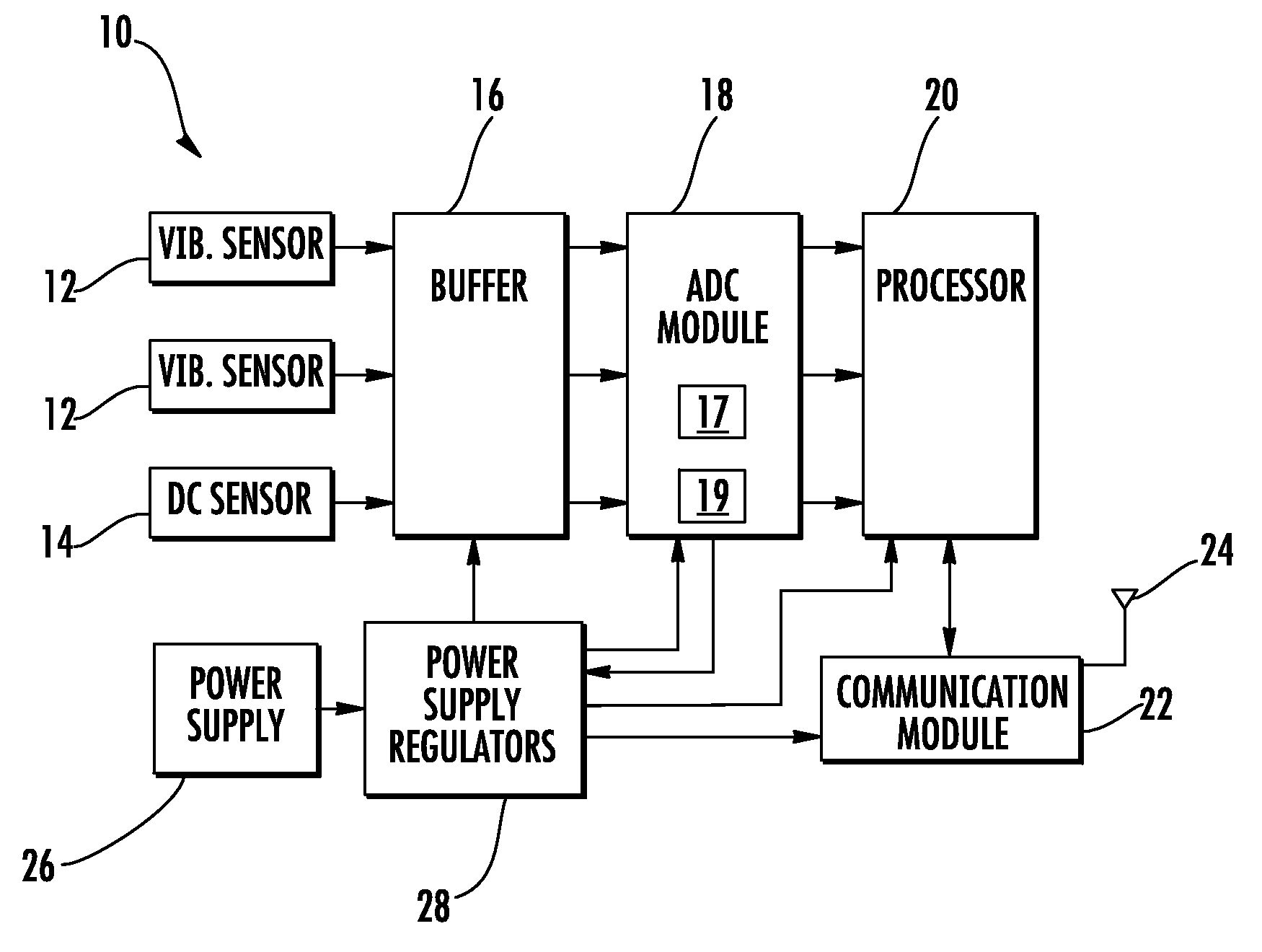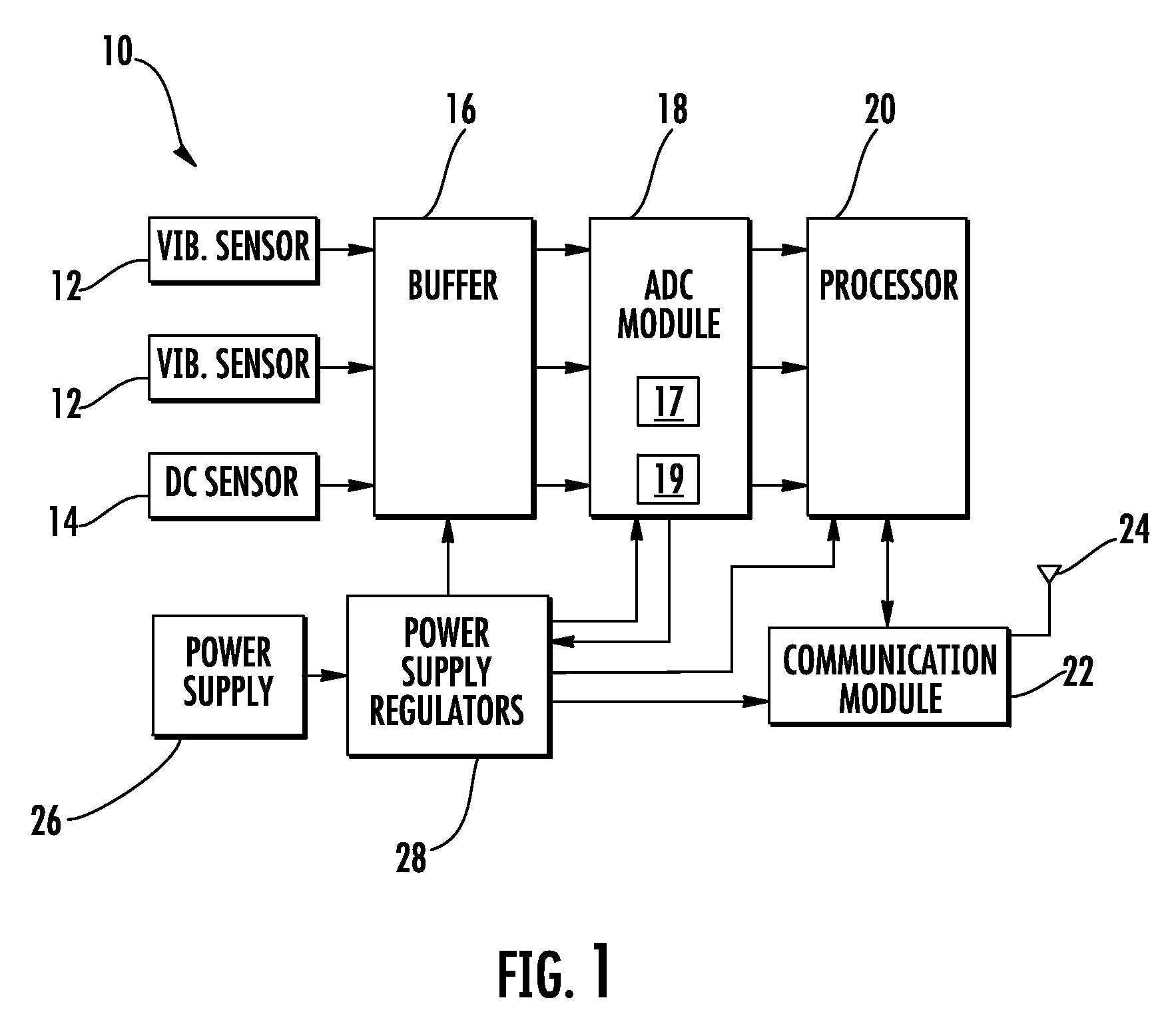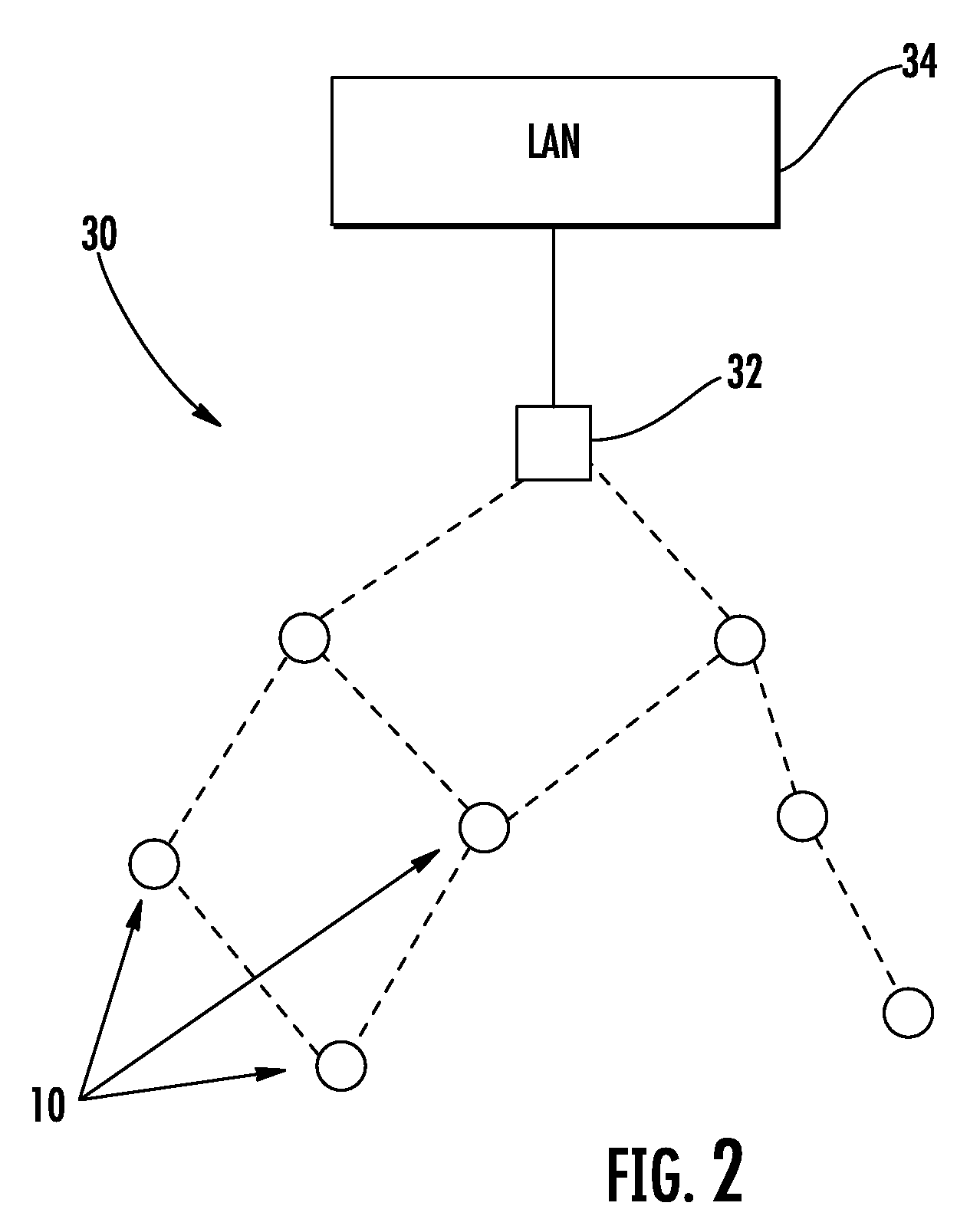Low power vibration sensor and wireless transmitter system
a vibration sensor and wireless transmitter technology, applied in the field of low-power vibration sensors and wireless transmitter systems, can solve the problems of vibration monitoring systems that are not well suited to operation in a control protocol network, memory and bulk data transfer capabilities, and significant power supply requirements of vibration measurement devices
- Summary
- Abstract
- Description
- Claims
- Application Information
AI Technical Summary
Benefits of technology
Problems solved by technology
Method used
Image
Examples
Embodiment Construction
[0013]A low power vibration sensor and wireless transmitter system has one or more sensor inputs to measure conditions such as vibration on one or more sensors. Also, the system is capable of making one or more steady state or DC measurements of conditions such as temperature and pressure. In one embodiment, the system is self-contained without hardwired power or communication connections and communicates over a wireless, self-configuring daisy-chain network.
[0014]Generally, the signal generated from a vibration sensor, such as an industrial accelerometer has about a 100-120 dB dynamic range with a frequency bandwidth of about 20 kHz to about 30 kHz. To convert a signal generated by such an accelerometer into a digital signal capable of wireless transmission typically would require a 24-bit analog to digital converter sampling at about 100,000 to 200,000 samples per second. This system 10 breaks the signal into two pieces: a low frequency range (about 1-2 kHz) and a high frequency r...
PUM
 Login to View More
Login to View More Abstract
Description
Claims
Application Information
 Login to View More
Login to View More - R&D
- Intellectual Property
- Life Sciences
- Materials
- Tech Scout
- Unparalleled Data Quality
- Higher Quality Content
- 60% Fewer Hallucinations
Browse by: Latest US Patents, China's latest patents, Technical Efficacy Thesaurus, Application Domain, Technology Topic, Popular Technical Reports.
© 2025 PatSnap. All rights reserved.Legal|Privacy policy|Modern Slavery Act Transparency Statement|Sitemap|About US| Contact US: help@patsnap.com



